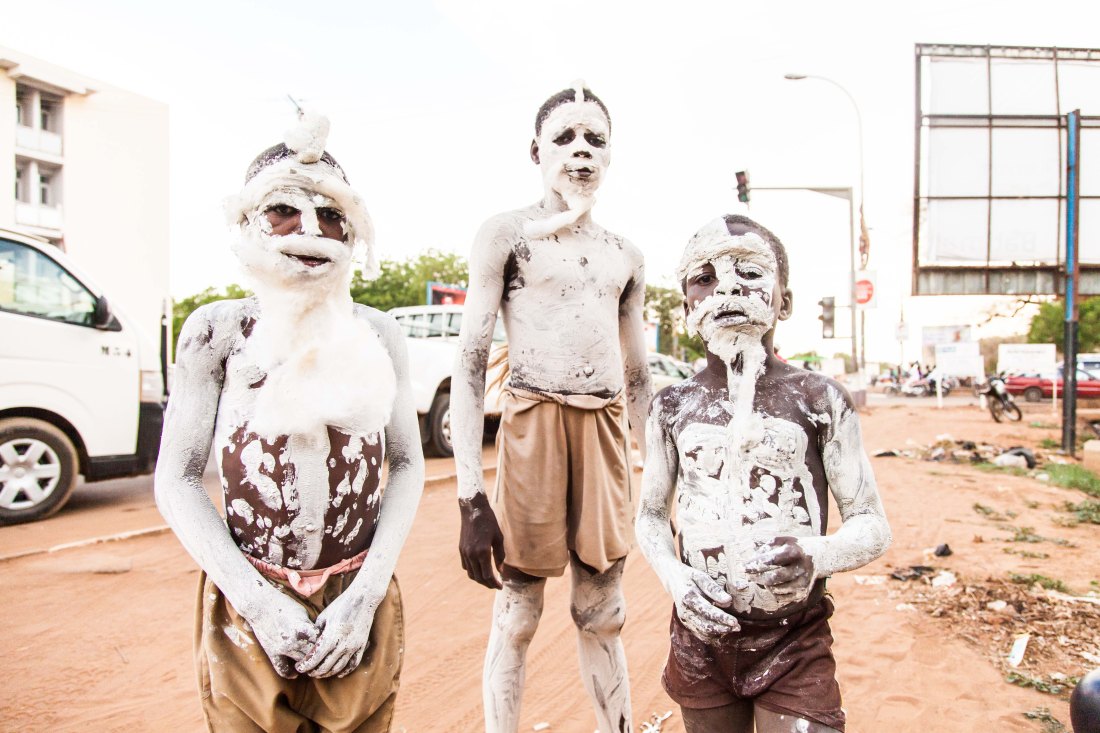
Ramadan is a difficult time for the landlocked Saharan country of Niger. On top of the regular fasting, it is peak hot season with daily temperatures regularly exceeding 45°C (113°F). Sleep is hard to come by in such temperatures and further inhibited by suhoor and iftar, the pre-sunrise and post-sunset meals respectively. Typically affable Nigeriens maintain their friendly composure, but a tense undercurrent runs throughout the country due to the volatile mix of hunger, fatigue, and heat.
Ten days into Ramadan, just as this system has become the new normal, young boys, painted white with shirts hanging out the back of their shorts and beard-like cotton swabs on many of their eager faces begin appearing. They sing. They dance. And they rattle discarded water bottles filled with rocks. It’s a uniquely Nigerien tradition called Tobey Tobey or Rabbit Rabbit in the local language, Zarma.
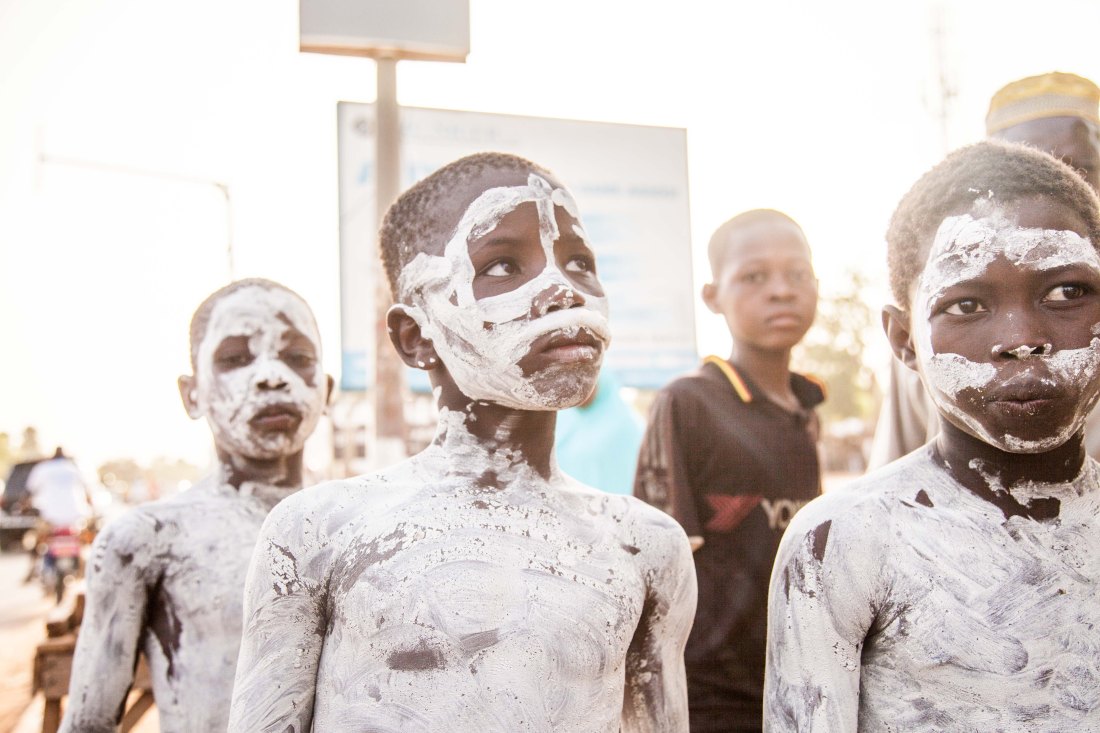
Several other Muslim country have traditions along a same vein in order to reward children for successfully completing an abbreviated Ramadan fasting period, generally lasting for the first 10 to 14 days of the Islamic festival. This celebration, which goes by a variety of names such as Quranchasho, Hag Al Laila, or Gergaoun depending on the country, has evolved into an almost Halloween like festival with children dressing up and being rewarded with sweets.
Tobey Tobey likely shares similar roots to these other celebrations, but the animistic heritage of Niger has added its own unique element in the personification of local animals. No other celebration singularly encourages its participants to dress up as animals and none have as deep a connection to rabbits as Tobey Tobey.
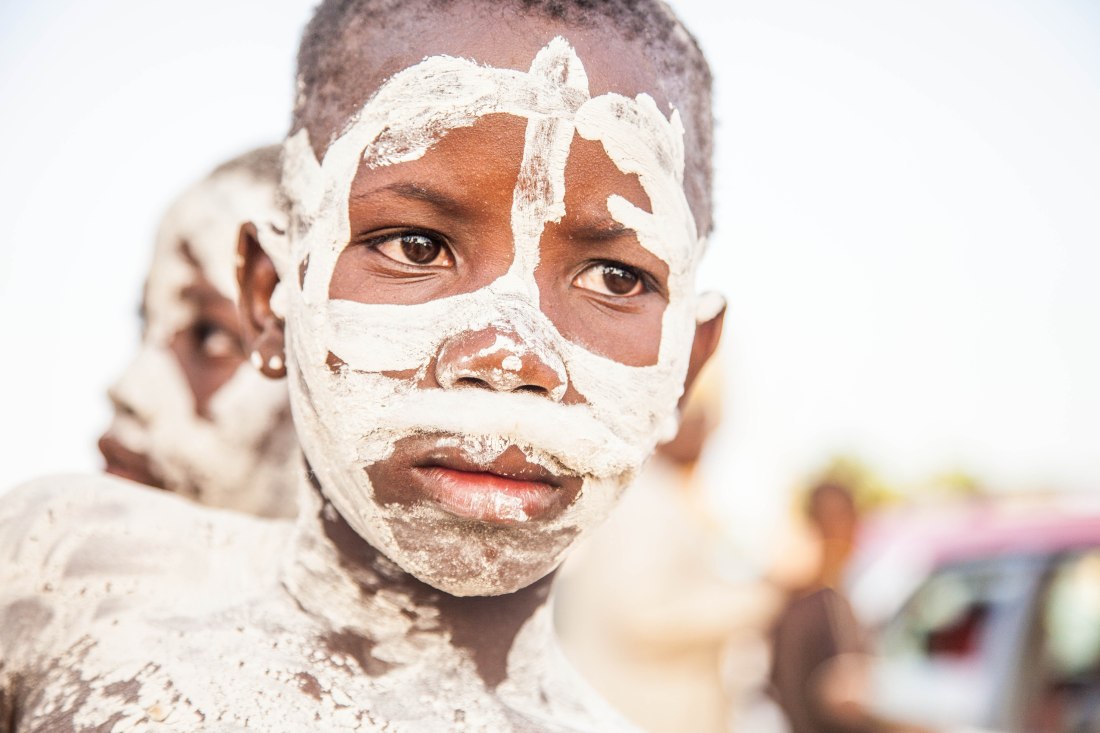
Rumors swirl of children dressing up as lions or other animals, but only rabbits seem to appear on the streets of Niamey, Niger’s capital city. When asked why rabbits, one child responded “In the days of our grandfathers, they dressed as rabbits. Our father then dressed as rabbits and now we dress as rabbits.” The sense of tradition runs strong for some while others participate for more two dimensional reasons. “We dress as rabbits because that’s how you get the sugar” another participant blunty states.
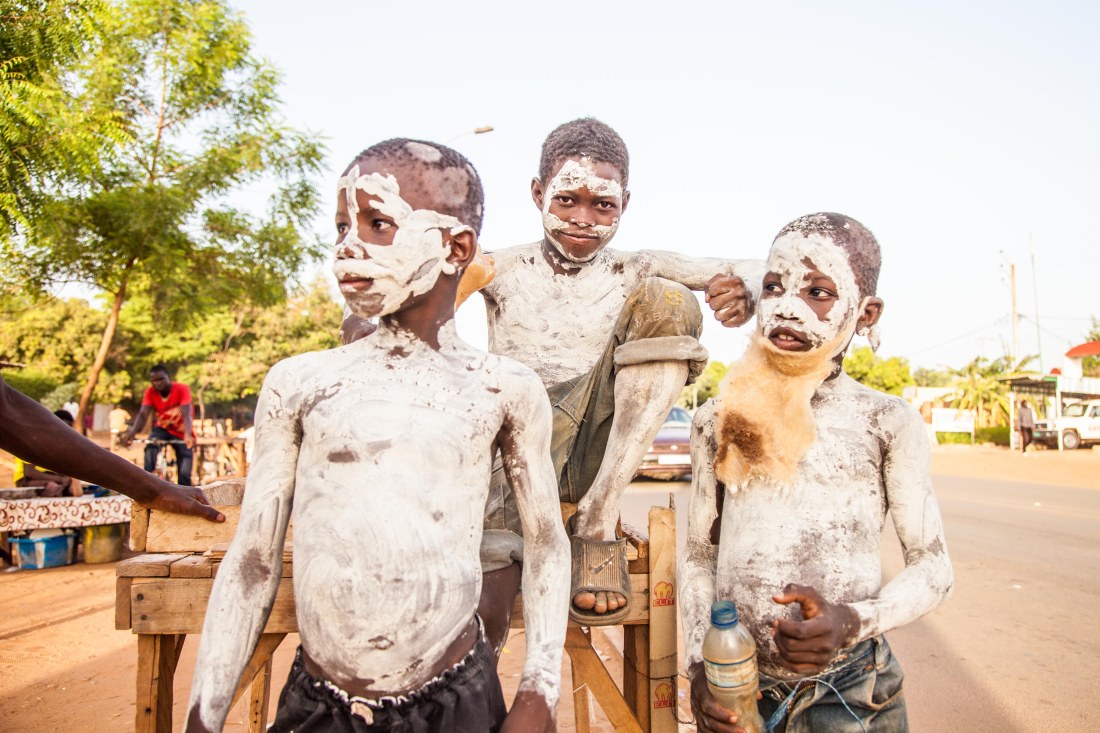
Traditionally, these leporine children smear a water and clay mixture onto their bodies bodies goes on as a muddy yellow color before drying into a brilliant white. They then travel door to door in their village drawing people outside with their repetitive chants of “Rabbit. Rabbit. Give us some sugar” and rattling of pebbles in repurposed water bottle shakers. The ultimate goal being to receive treats whether those be dates , literal sugar cubes, or money.
As with much in Niger, rapid urbanization is bringing about changes in the way Tobey Tobey is celebrated. Children have added performing at traffic lights and soliciting treats on street corners to their sugar-collecting repertoire.
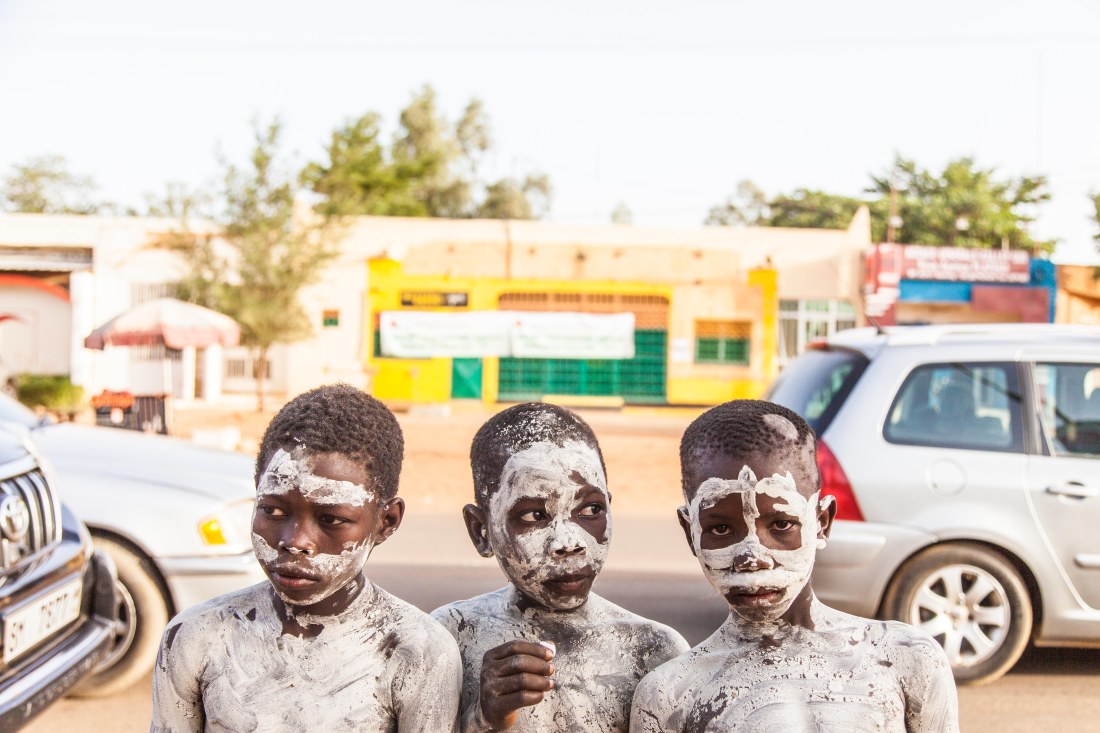
In the end, the precise origins of Tobey Tobey are obscured in the memory of many participants who do it more out of a mixed sense of tradition and an affinity towards sugar rather than a deep understanding of its history. But still, stories are told of the ancient Nigeriens, here when Islam first arrived in this part of the world. It’s said they struggled to fast during the month of Ramadan. They were tired, hungry, and hot due to the demands of fasting in an already inhospitable environment. Tobey Tobey is told to have been developed as a way to bring some joy and laughter back into their lives as they adjusted to the demands of this new festival.
Those are beautiful photos. Thanks for sharing with us a bit of Nigerien/ Muslim culture, Joel – I enjoyed learning about it. || http://www.lorikemi.com